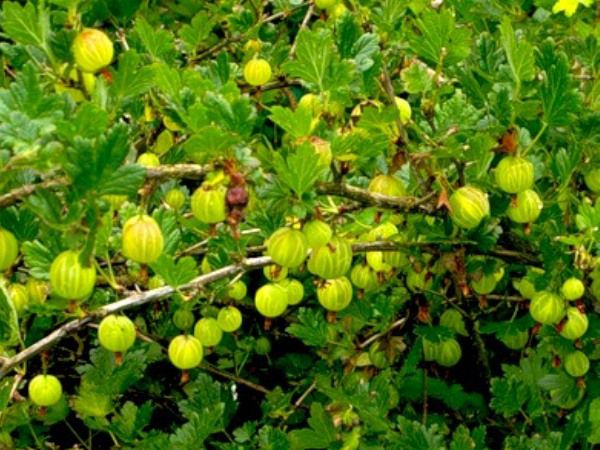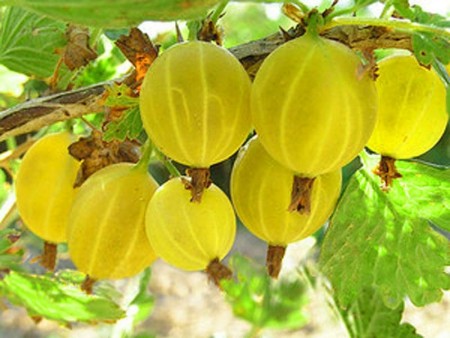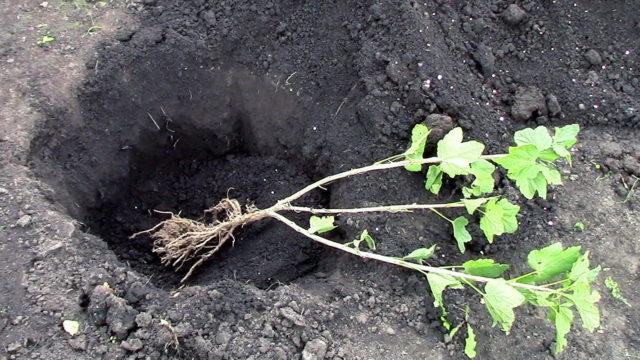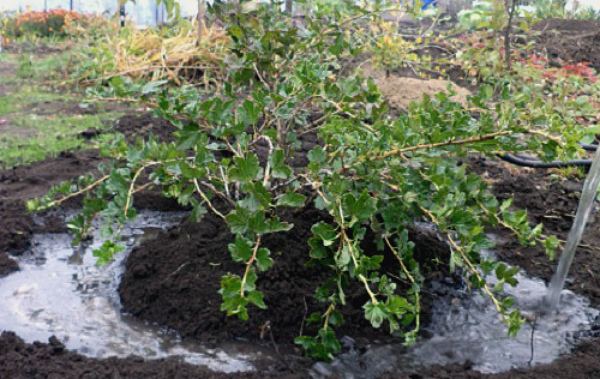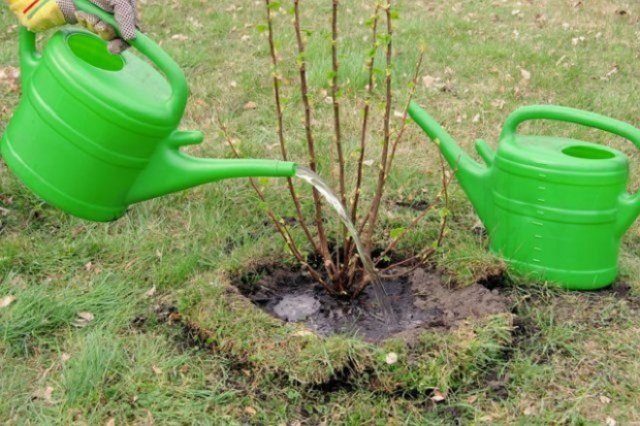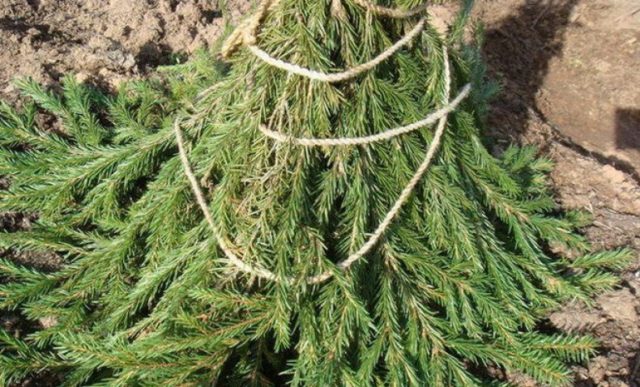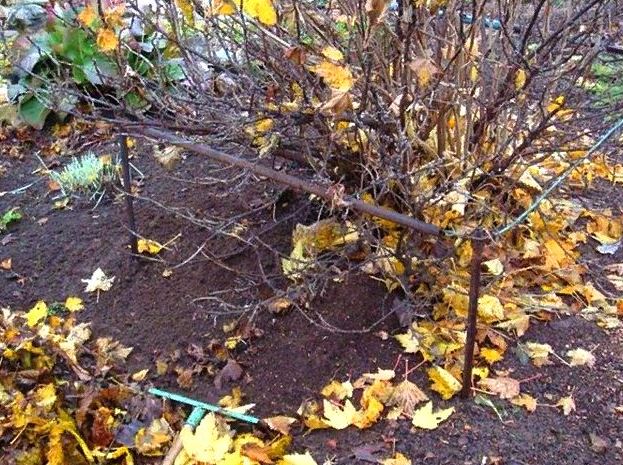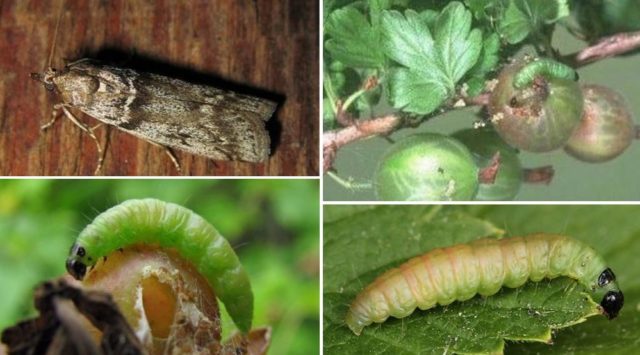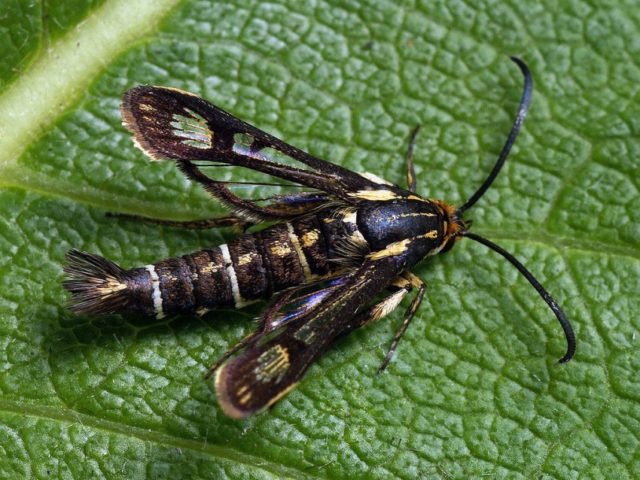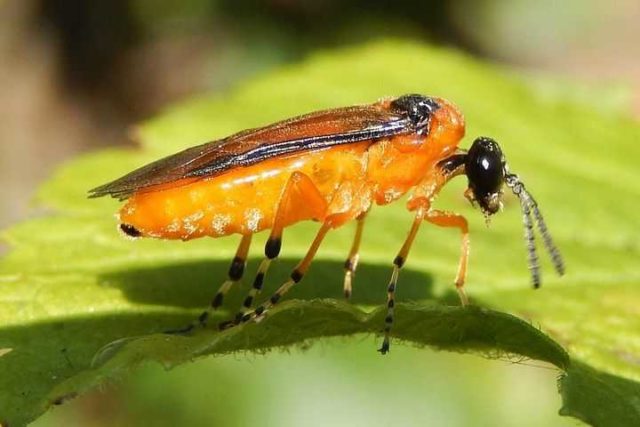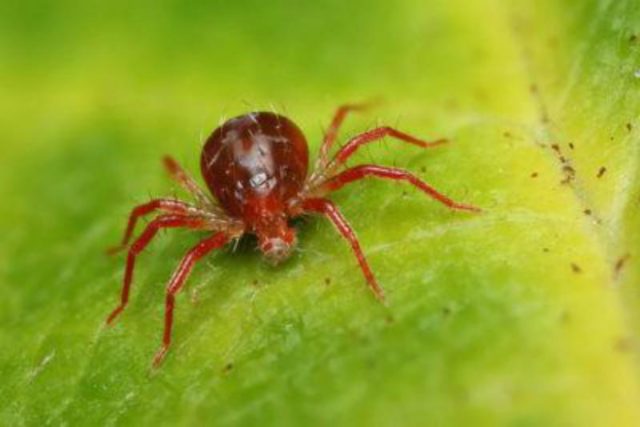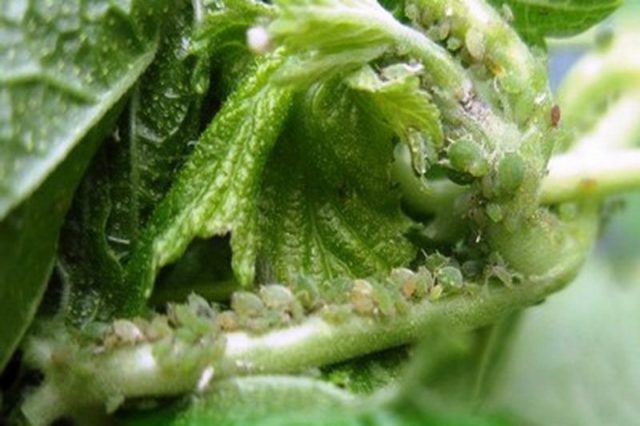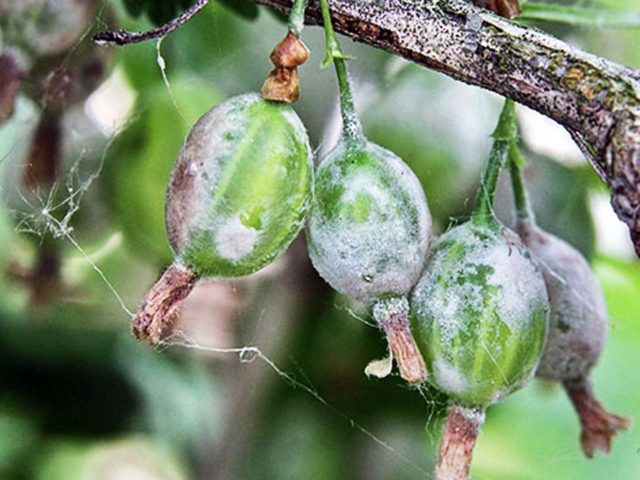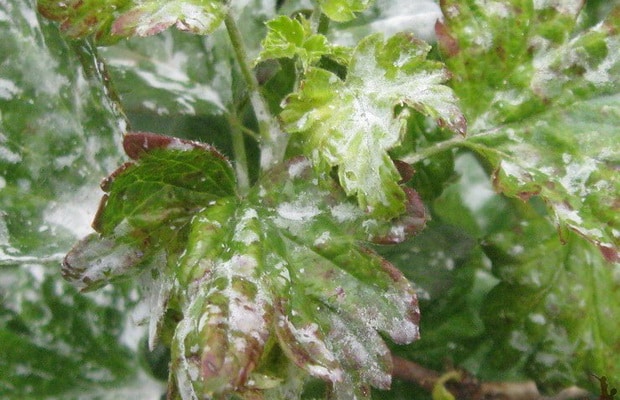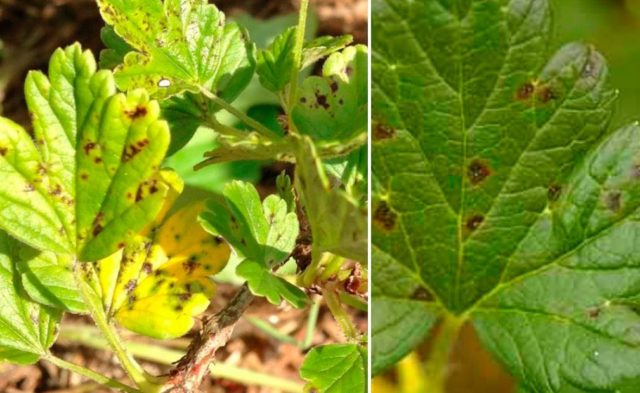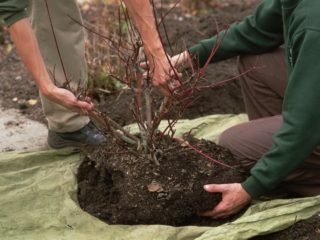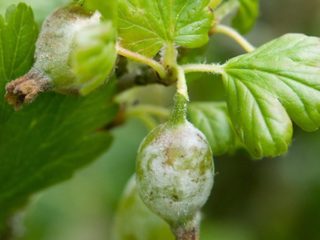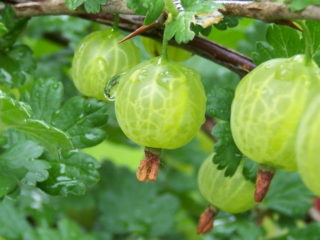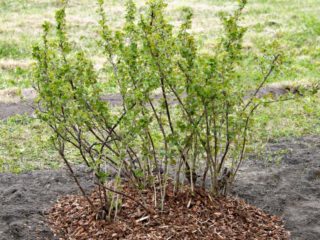Content
Gooseberries are widespread in our country due to their high yield, early ripening, nutritional value, medicinal and dietary properties of berries and a variety of varieties. Gooseberry Yarovaya belongs to the fast ripening varieties. In addition to early fruiting, this variety is distinguished for its resistance to diseases and pests, as well as for undemanding care, cultivation and harvesting.
Description of the spring gooseberry
Description and photo of the Yarovaya gooseberry variety will help gardeners - amateurs decide on the choice of berry culture.
The Yarovaya gooseberry variety is considered very promising, which was obtained at the Belarusian Research Institute of Potato and Horticulture as a result of free pollination of the seeds of the Columbus variety and belongs to the yellow-fruited varieties. Medium-sized, slightly spreading bushes with a neat crown and almost straight branches reach 1 - 1.5 m. Gooseberry shoots are erect, with an average degree of coverage with long, thin, double, less often single, thorns. This characteristic feature of the variety sets it apart from others, making it attractive to many gardeners who dislike this crop due to the problems associated with the increased spikeiness of the bushes - during pruning and harvesting of lago ..
The lemon-yellow berries of the Yarovaya gooseberry have a thin skin and a refreshing sweet-sour taste. The fruits of the shrub are oblong, rounded in shape and practically have no edge, in rare cases they are covered with separate hairs. The mass of medium-sized berries is 3 - 4 g. The branches of the Yarovaya gooseberry variety are covered with shiny dark green leaves with rounded jagged edges.
The Yarovaya gooseberry variety is a self-fertile crop. She doesn't need pollinators. Fruit setting occurs when pollinated with pollen from their own flowers. But when pollen from flowers of other varieties gets in, there is a sharp increase in fruiting.
The most widespread variety Yarovaya received in the North-West, Central Black Earth, Volgo-Vyatka and Volga regions of the country.
Drought resistance, frost resistance
Gooseberry is a culture of a temperate climate. The spring gooseberry variety is characterized by good winter hardiness. The berry crop is grown without shelter for the winter up to 60 ° north latitude. On the territory of the northern European part of Russia, the Far East, Altai and Siberia, the variety needs additional insulation in the winter.
In central Russia, the spring gooseberry can tolerate temperatures as low as –25 ... –30 ° С. At lower temperatures, the root system of the plant freezes up, which is reflected in a decrease in yield indicators. In addition, freezing of the culture is possible due to poor preparation for wintering in the summer-autumn period. This may be due to the increased autumn temperature and the excess of the soil moisture level.
The productivity of the Yarovaya variety is restored after freezing for 4 - 5 years. The annual growth of gooseberries freezes at a temperature of -33 ... -34 ° C. The roots of young plants - at a temperature of -3 ... -4 ° C. The Central Chernozem belt is the most favorable for the cultivation of the Spring gooseberry variety.
In comparison with other types of gooseberries, the Yarovaya variety is characterized by increased drought resistance and endurance to high temperatures. But, being a moisture-loving culture, in conditions of insufficient moisture, gooseberries grow poorly and bear fruit. It is especially important to monitor this indicator during the period from flowering to ripening of berries. The recommended amount of precipitation should be 200 mm. In dry years, the bushes need to be watered abundantly, this will increase the yield by 20 - 25%. The southern regions are unsuitable for growing the Spring gooseberry variety without additional irrigation.
Excessive moisture also does not benefit the root system of plants. Spring gooseberries are not recommended for planting in swampy areas and areas with a close location of groundwater.
Fruiting, productivity
The Yarovaya gooseberry variety is characterized by high yield rates - up to 6 kg from 1 bush. Under favorable conditions, the bushes are capable of bearing fruit for 20 years. Most of the crop is formed on branches between the ages of 3 and 6. Like most berry crops, gooseberries need good lighting. The shade of the growing areas leads to the fact that the berries of the variety become smaller, and the total volume of the harvested crop decreases.
The growing season of the variety begins earlier than that of other berry crops. The fruiting period occurs at the end of June - beginning of July. When ripe, the berries stay on the branches for a long time, without crumbling for a long time. But do not delay the harvest. This can lead to a decrease in the content of vitamins and sugar in fruits.
The storage of Yarovaya gooseberry berries is carried out in a cool room, for a period of 3 - 5 days, in refrigerated chambers - much longer.
The spring gooseberry variety is one of the most transportable crops among berry plants. For transportation over long distances, unripe fruits are used, which are poured into boxes with solid walls. Do not pour berries from one box to another, this can lead to a decrease in product quality.
Yarovaya gooseberry berries contain many micro- and macroelements, as well as up to 42% vitamin C. They can be consumed both fresh and after heat treatment in the form of various preparations - compote, jam, jelly, jelly. The benefits of gooseberries are to lower cholesterol levels, strengthen blood vessels, free the body from toxins and heavy metal salts, as well as normalize the condition in case of hypertension, obesity, anemia
Advantages and disadvantages
Among other types of gooseberries, the Yarovaya variety compares favorably with the following characteristic features:
- early ripening;
- good productivity;
- powdery mildew resistance;
- thin skin and dessert flavor of berries;
- high level of frost resistance;
- endurance and shape retention during transportation.
The disadvantages of this variety include:
- fast overripening;
- powdery berries in case of delay in harvesting;
- susceptibility to fungal diseases.
Breeding features
Gooseberries are propagated by Spring seeds and by means of vegetation. The first method is used to breed new varieties, because due to free cross-pollination, the variety does not produce homogeneous offspring. In order for the signs to persist, vegetative propagation methods are used.
The most common are:
- Horizontal layering. Well-developed branches with strong annual growth are suitable. Vegetation is carried out in early spring, when the soil has time to warm up and begins to crumble slightly, but before the buds open. Suitable branches of the Yarovaya variety gooseberry are bent to the ground, fixed with wire brackets and left uncovered. In late April - early May, vertical shoots appear on the horizontal layers of the Spring gooseberry, they are earthed and sprinkled with earth.In the fall, by the time the root system is formed at the cuttings, the branches are separated from the bush, divided by the number of roots and planted for further cultivation in a greenhouse or nursery.
- Vertical layering. In autumn or early spring, branches are cut to 1/3 of the length. In the spring, new shoots will appear from the root part. After they reach a height of 15 cm, they are covered with fertile soil. In the fall, rooted shoots are cut off at the very base, after which they are planted in a new place. This method is used mainly when transferring a variety to another site.
- By dividing the bush. The period is in autumn, after the foliage has fallen, or in early spring, before bud break. Old bushes are dug up and divided so that each part has its own root and several young shoots. Old branches are unsuitable for propagation.
- Lignified cuttings. Cuttings of the Yarovaya gooseberry are cut, placed in sand and kept at a temperature of 2 - 3 ° C for 1.5 - 2 months. Then they are covered with sawdust and left under snow until spring. In early spring, cuttings are planted for rooting in greenhouses.
- Green cuttings. Young shoots of the Yarovaya variety gooseberry, about 20 cm long, are cut in the morning at 10-11 am or after lunch at 15-16 hours. At this time, the gooseberry branches contain a maximum of dry and biologically active substances, which contributes to better rooting of cuttings. Prepared shoots are divided into parts with 1 - 2 internodes and a total length of 8 - 10 cm. The cuttings are planted in the early morning and after the emergence of the roots they feed, loosen and treat pests and diseases. In the fall, rooted cuttings are dug up and planted for growing in a greenhouse.
When the Yarovaya gooseberry variety is propagated by green cuttings, it is possible to achieve the best results: young bushes recover from the negative effects of pests and diseases. At the same time, the characteristic features and characteristics of the variety remain unchanged.
Planting and leaving
Before planting the Yarovaya gooseberry variety, careful attention should be paid to the choice of the seat. The area should be well lit. Failure to comply with this condition will lead to a reduction in yield and a decrease in the percentage of sugar content in berries. It is recommended to plant bushes along fences or fences. This will protect the landings from wind and bad weather. The soil should be slightly acidic or neutral. In order to prevent stagnation of water in case of seasonal flooding of the site, it is recommended to make drainage.
The best time to plant gooseberries is autumn, 3 to 4 weeks before the onset of frost. You can plant seedlings in the spring, but in a very short time - between the snow melting and the beginning of sap flow.
For seedlings of the Spring gooseberry variety, they dig holes that are 2 times larger than the volume of the roots. The top fertile layer is removed and mixed with rotted manure. You can add a mixture of superphosphate and potassium sulfate to the well. The branches of young seedlings are cut to 1/3 of their length and planted in planting holes, deepening by 5 - 8 cm.The distance between adjacent bushes should be at least 1 - 1.5 m. Between rows, a distance of 2 - 2.5 m must be maintained.
Growing rules
After planting in the soil, the seedlings need to create favorable conditions for effective growth and a high yield. Caring for the Yarovaya gooseberry variety consists of several main stages, at each of which it is recommended to comply with the basic rules of cultivation:
- Watering. The spring variety tolerates drought well enough, but for better growth and yield, care must be taken that the plant receives enough moisture during the growing season. In the period from late July to early August, future buds are formed.The recommended frequency of watering at this time is 1 - 2 times a week, 1 bucket per adult Yarovaya gooseberry bush. Watering should be done from the bottom around the branches, without affecting the foliage. In sunny weather, wet leaves can get burned, and in cloudy weather, a damp surface can become a source of various diseases.
- Top dressing. It is carried out twice a year: in the spring, as well as during planting, organic fertilizer is introduced into the soil in the form of horse humus or humus. Nitrogen-containing fertilizers, such as urea, will also be beneficial. In the summer, during the active growth of gooseberries, it is recommended to add mineral dressing obtained from the following components:
- 70 g double superphosphate;
- 100 g of wood ash;
- 30 g of potassium sulfate.
- Pruning. If carried out correctly, it is possible not only to increase the size of the fruits and the overall yield, but also to save the Yarovaya gooseberry variety from diseases. Pruning is carried out in early spring in April, before the buds appear, or in late autumn, after harvest, before the first frost. The branches are cut at the very soil, taking special care, since the root system of the bushes is very close to the surface. In the early years, perennial branches are cut in half: this will create the base of the bush. After 3 years, the shrubs of the Yarovaya variety are thinned in order to eliminate thickening. Weak, dry, old and improperly growing shoots are removed completely. Branches with berries that tend to the very ground are also removed. To rejuvenate the bushes, it is necessary to remove several of the oldest shoots every year. A properly formed crown of a bush should contain 15 - 20 branches, 2 - 3 pieces each. every age.
- Rodent protection. To combat rodents in the fall in the garden, it is necessary to dig up trunks and aisles. This will destroy the existing mouse burrows. During this period, a layer of soil is raked off from the base of the gooseberry bush, the lower section of the trunk from the root collar to the first branches is tied with spruce branches so that the needles are directed downward. This will scare away pests. For the same purpose, sedge or reeds can be used. After strapping, the trunk circle is again sprinkled with soil. Straw attracts mice and is therefore not used. In the spring, the bushes are freed from the protective structure. In winter, the snow near the plantings is trampled down to prevent the penetration of rodents to the trunk and roots.
- Preparing for winter. Before the first frost, the planting area must be put in order - to collect all the fallen leaves, remove weeds, cut off old and damaged branches. The soil is loosened, mulched and fertilized - ash, compost, potassium phosphate. Plants are not covered for the winter, since the Yarovaya gooseberry variety is characterized by good frost resistance.
Pests and diseases
Like many other berry crops, the Yarovaya gooseberry variety is susceptible to the negative effects of pests and various diseases.
Of the pests, the greatest damage to the Spring gooseberry variety is caused by:
- Gooseberry moth - a gray moth-like butterfly lays up to 200 eggs, from which light green caterpillars are born, damaging and destroying seeds and pulp of berries.
- Glass-maker - a small butterfly that lays eggs in cracks at the base of the buds of young shoots, from which caterpillars appear, gnawing into the buds and branches, which gradually wither and dry out.
- Yellow sawfly - a small butterfly that lays eggs during the gooseberry flowering period. Gluttonous larvae destroy all foliage, which leads to the death of the current and next year's harvest.
- Common spider mite - an insect less than 1 cm in size lives on the underside of the leaves, which are covered with specks, turn yellow, warp, dry up and fall off.
- Gooseberry aphid - sucks sap from the plant, damaging leaf stalks, plates and tops of young branches. Leaves curl and fall off, shoots bend and stop growing.
To combat pests, gooseberry bushes of the Yarovaya variety are sprayed with the following compositions:
- Bordeaux liquid 1 - 3%;
- copper sulfate - 3%;
- ash.
With the same means, it is recommended to cultivate the soil around the bushes in order to prevent the spread of various diseases. The main ones include:
- Spheroteka - American powdery mildew. A fungal disease that affects all parts of the shrub, first with a white mealy, and then with a dense bloom. The leaves dry out and fall off, the berries crack.
- Septoria - white leaf spot - first brown, and then white. The foliage falls off en masse, the volume and quality of the crop are reduced.
- Anthracnose - a marsupial mushroom that appears in areas with a humid climate. Small dark spots appear on the lower old leaves, which then merge. The disease can lead to almost complete exposure of the bushes in the second half of summer, the death of shoots and a decrease in yield.
Unlike other berry crops, the Yarovaya gooseberry variety is practically not susceptible to viral diseases, with the exception of one transmitted by aphids, as well as by vaccination. Translucent yellow stripes appear along the leaf veins. Leaves wrinkle and deform. In the case of severe damage by the virus, a general inhibition of the growth, development and fruiting of the plant occurs. Timely measures taken will help save the gooseberries from death and prevent the occurrence of similar situations in the future.
Conclusion
Spring gooseberry is unpretentious in care and can take root in any area, thanks to its frost resistance and ability to withstand major diseases and pests. The minimum investment of time and effort will soon pay off with high yield rates and the excellent taste of the first spring berries harvested from their site.
